The latest JOLTS report (Job Openings and Labor Turnover Summary), data through February, is now available. The first chart below shows four of the headline components of the overall series, which the BLS began tracking in December 2000. The time frame is quite limited compared to the main BLS data series in the monthly employment report, many of which go back to 1948, and the enormously popular Nonfarm Employment (PAYEMS) series goes back to 1939. Nevertheless, there are some clear JOLTS correlations with the most recent business cycle trends.
The chart below shows the monthly data points four of the JOLTS series. They are quite volatile, hence the inclusion of six-month moving averages to help identify the trends. For the last twelve months, the moving average for openings has been above the hires levels as seen in the chart below.
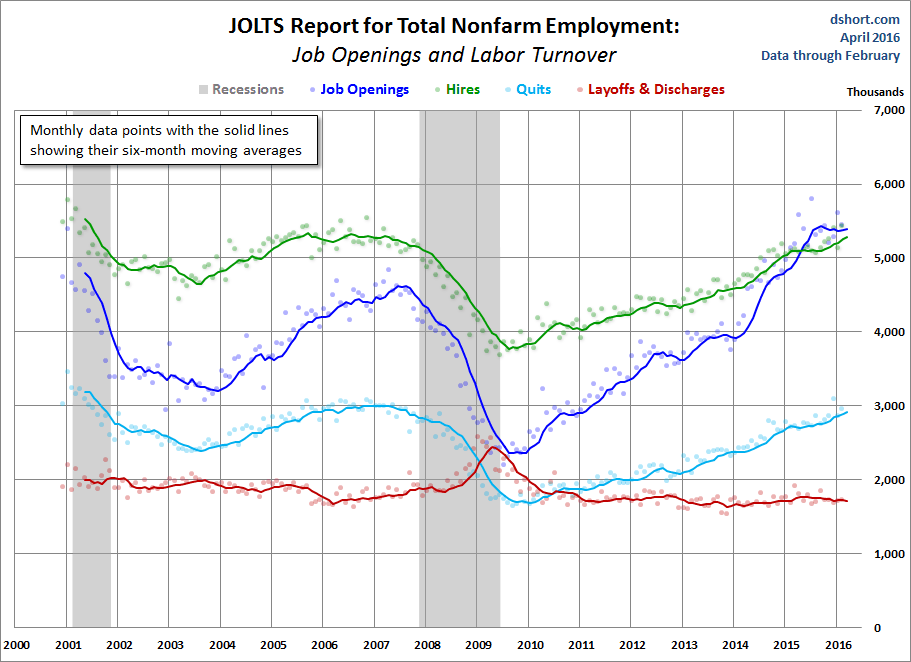
The most closely watched series is the one for Total Nonfarm Job Openings, the blue line in the chart above. The moving average peaked in mid-2007 and began rolling over to its trough a couple of months after Great Recession ended. The Hires series is roughly similar in its trend. Quits more or less flatlined since the beginning of 2015, but have been trending slightly upward at the end of the year; they are generally thought to show an economy that supports the flexibility to leave or change jobs. The Layoffs and Discharges series, the red line, has been been essentially flat since early 2013.
For comparison, here is the monthly BLS Employment Situation Summary charted with JOLTS data:

A Population-Adjusted Perspective on JOLTS
The chart above is based on the actual numbers in the JOLTS report. A better way to view the numbers is as a percent of Nonfarm Employment, which essentially gives us a population-adjusted version of the data. Here is that adjustment for four of the JOLTS series. Note that the vertical axis for each is optimized for the high-low range to facilitate an understanding of the individual trends.
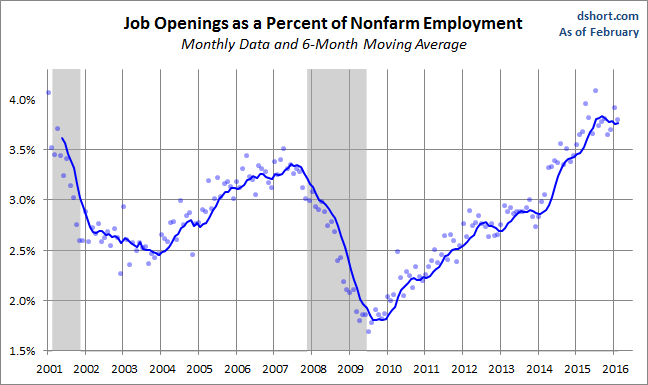

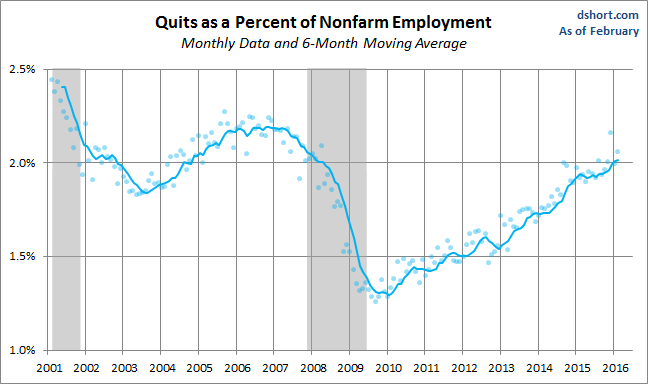
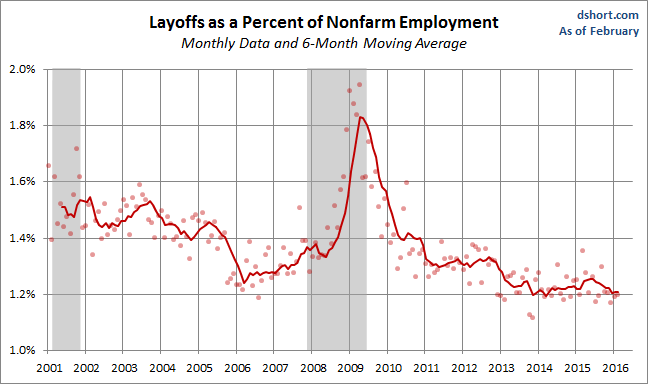
Where Are We Now in the Business Cycle?
Based on the six-month moving averages, we can see that:
- The Openings percent is fractionally off its July record high since the start of the series in December of 2000 and the moving average has been above the hires levels for the last twelve months.
- Hires have leveled recently seen an uptick and remain below the 2006 peak.
- Quits are a bit above the trough between the last two recessions and have seen a slight uptick in the last couple months of 2015.
- The Layoffs and Discharges series is hovering around its historic low.
The Trend in Quits
To reiterate a previous point: Increases in Quits suggest employment flexibility. Quits tend to be inversely correlated with Layoffs and Discharges, which are associated with business cycle weakness. Following the last recession, Quits began increasing in 2010, and the rate accelerated in 2013. The trend leveled out in early 2015 and has seen a recent uptick. Layoffs and Discharges trended downward and have been relatively stable since late 2013.
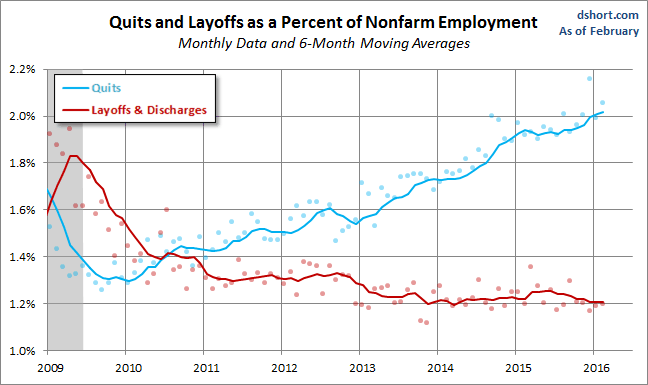
It would, of course, be excellent if we had historical JOLTS data stretching back through several business cycles. But alas we do not.
The JOLTS reports will be interesting to watch in the months ahead. But the volatility of the data, which is also subject to revisions, encourages caution in taking the data for any given month very seriously.
